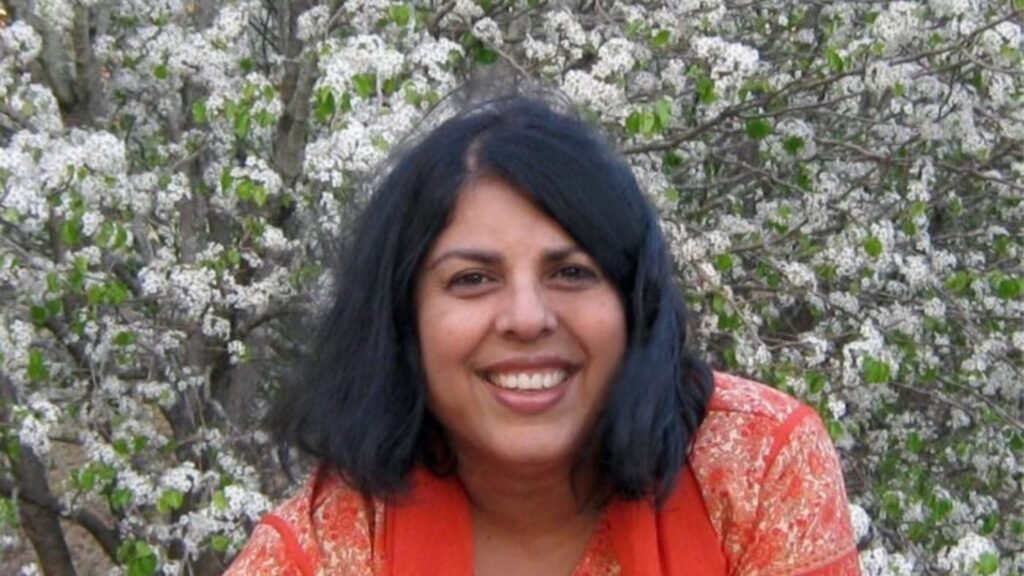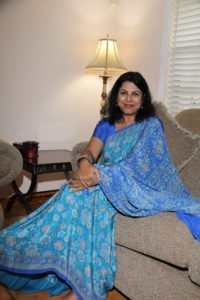
Queen of fiction Chitra Banerjee Divakaruni, a bestselling author, poet and professor of writing at the University of Houston’s creative writing program. Speaks to Zorba Books about writing, being an author, her career and books.
- Chitra Banerjee your writing career started as a poet, with five volumes of poetry published. Can you share with our readers after getting inspiration to write on a topic how would you proceed to write a poem?
It is very difficult to explain the process of writing poetry. Sometimes it is based on an emotion or an image. Sometimes I would just start putting down thoughts and see where it led me. Some of my more narrative poems had a story behind them. I will give you one example. After my grandfather passed away, I wanted to write a poem to honor him and the special relationship the two of us had. So I started thinking, what was my strongest or most favorite memory of him. I realized that when I went to visit him, he would take me up to the terrace of his house and tell me stories from our folktales and epics. We often ate snacks and fruits up there. I remember eating oranges that he would peel for me. So the smell of oranges becomes important in the poem and pulls up many memories.
2. Your novel The Palace of Illusions is a national bestseller and is an exciting re-telling of the epic Mahabharat. Why did you choose to narrate the story through Draupadi’s eyes?
I feel it is very important to tell stories through the eyes of major women characters. People think of epics (not just our Indian ones but also the western epics) as tales that belong to the men. The women in them are often ignored, even though they are interesting and complex and even play a big part in the events. I was always fascinated by Draupadi. To me she was the most complex woman in the Mahabharat. I felt she was wronged, and then wrongly blamed for the war. So I wanted her to tell her own story as she understood it. I am very thankful that so many readers have taken to The Palace of Illusions and that it is taught in so many colleges and schools.
3. Chitra Divakaruni tell us about your latest book, Forest of Enchantment, and your experience writing it.
I wrote Forest of Enchantments with a similar idea to The Palace of Illusions: to retell the story of the Ramayan from the point of view of a major woman character, in this case, Sita. I felt that Sita (like Draupadi) had been misunderstood. She had been interpreted as meek, mild, docile, obedient and even goody-goody—a woman who was an unfortunate victim (of abduction, and later, of abandonment), which she put up with. Worse, we as Indian women were often told to “be like Sita.” I always felt that there was more to Sita than this patriarchal interpretation, and indeed my research proved me to be right. This book took me almost 10 years of research, and it was a tough book to write, but it was worth it. I hope I have been able to bring out Sita’s strength and dignity and the fact that she never puts up with wrongdoing—not from Ravan, and not from Ram. She is also a powerful role model for single mothers everywhere.

4. Which incidence in your experience as a writer, who has been published a significant number of times, really stands out?
When my first book of stories, Arranged Marriage, won an American Book Award, that was a big moment. It made me feel that indeed I had some talent, some stories worth telling. I think I began to put all my creative effort into writing from that time on.
5. Most of your work is fiction and fantasy. Is there any particular reason?
I love fantasy and the magical world. I also love writing about contemporary immigrant life. I guess that’s why I am drawn to those subjects. I like fiction more than nonfiction because it gives me the freedom to imagine things.
6. Your focus in your writings is majorly on South Asian women. Is it influenced by your own experiences as an immigrant South Asian woman?
Definitely. Immigration for me, was a powerful experience. It shaped me into who I am today. It made me see India and Indian culture more clearly than I had seen when I lived in India. It also made me realize the challenges faced by South Asian women—in their birth countries and even when they immigrate. These became themes that I felt compelled to write about.
7. Was it easy to become a successful author? How did you respond to Chitra Banerjee Divakaruni books being adapted into big screens?
It was not easy in the beginning. I faced many rejections. I had to grit my teeth and keep going, keep believing in myself. Success came slowly. I do want young writers to understand that. Sometimes we have to be patient and persistent.
As for the movies, I am always delighted when one of my books is made into a movie. I feel it’s a whole new way for the story to reach people. I do hope for a sensitive and intelligent director who understands the spirit of the book.
8. You worked hard to reach where you are now. What will be your advice to budding, struggling writers?
My advice: follow your passion, work hard—and read a lot! I learn so much as a writer, even now, by reading the authors I admire.
She started her writing career as a poet and has won several awards for the same. She has also published collections of short stories, like Arranged Marriage, which won awards including the American Book Award. She has written novels like The Mistress of Spices, Palace of Illusions, Sister of my Hearts, Before we visit the Goddess, etc. Her work has been published over 50 magazines and translated into 29 languages. She writes for adults as well as children and delves into multiple genres, including realistic fiction, historical fiction, magical realism, myth and fantasy.
For more Indian author interviews click here
Pingback: How do I Write Poetry that will sell? - ZorbaBooks
Pingback: FAQ's on Writing a Book - ZorbaBooks
Pingback: Why YOU should build an Author Brand? - ZorbaBooks
Pingback: Top Author Awards in India - ZorbaBooks
Impressed exorbitantly, keen desire to write fiction, story and poetry in English. Need some inspiration to accelerate further.
Mr Mahto,
Inspiration is first step, and congratulations to you for achieving, persistence and building up skill is next. Please read these blogs they will help. https://www.zorbabooks.com/blog/